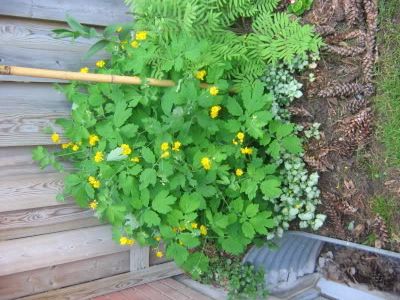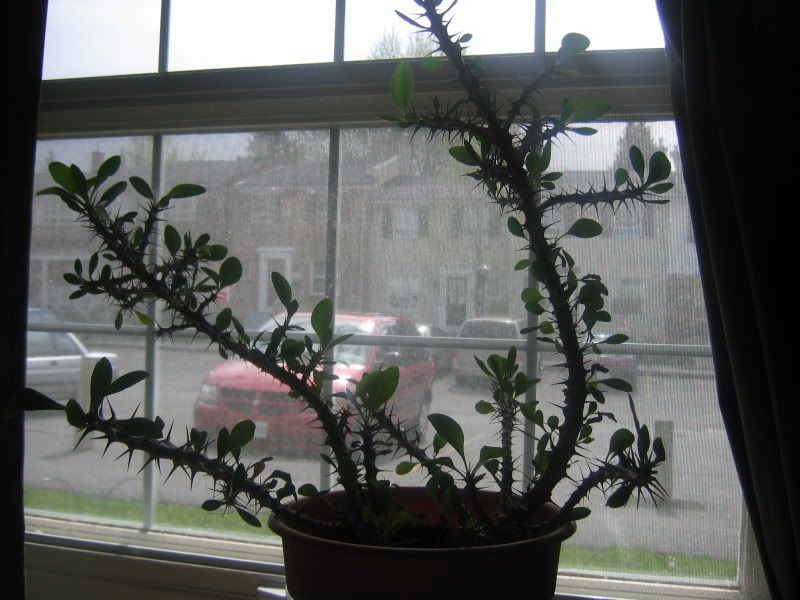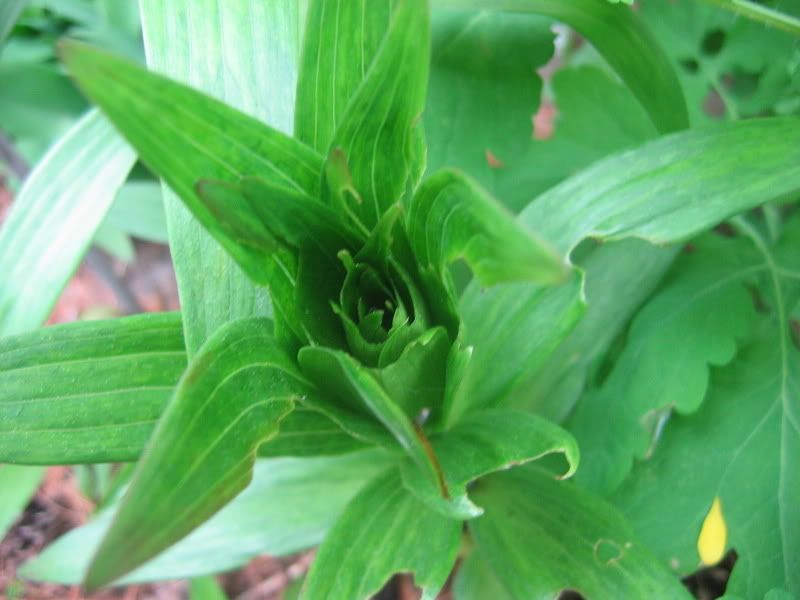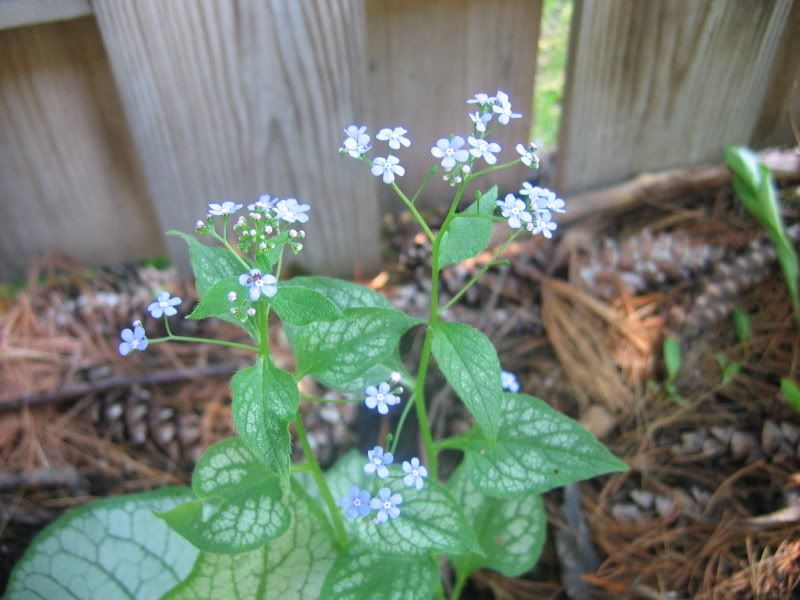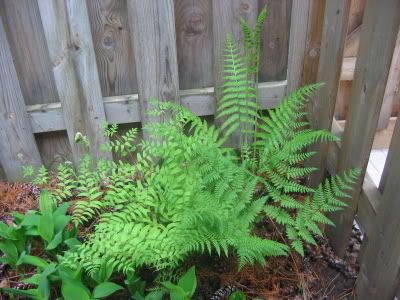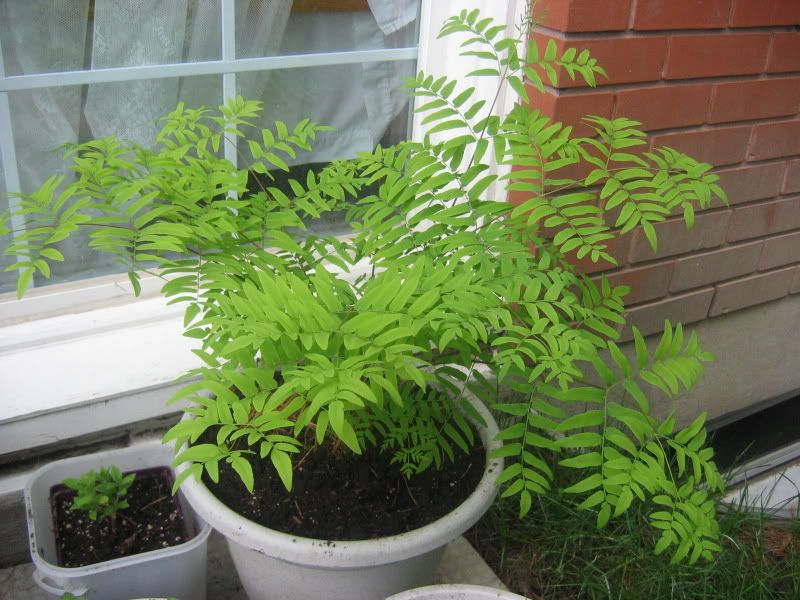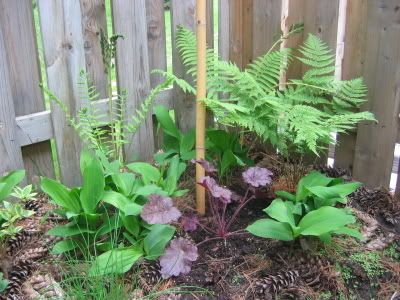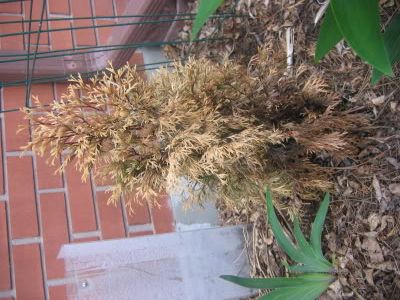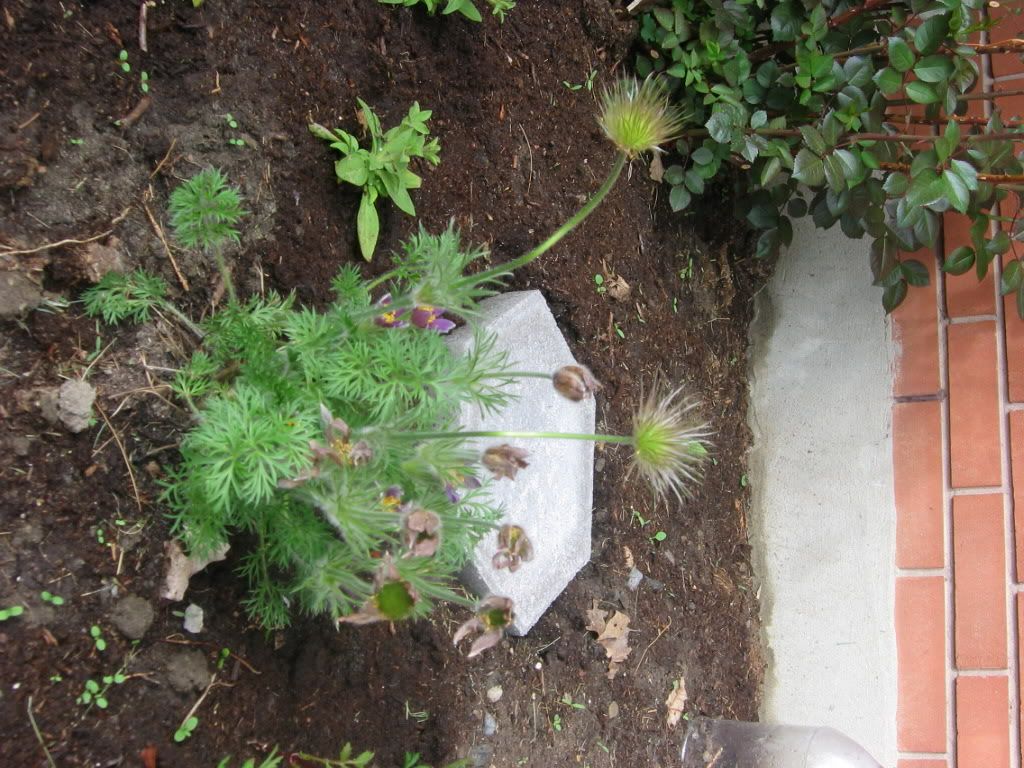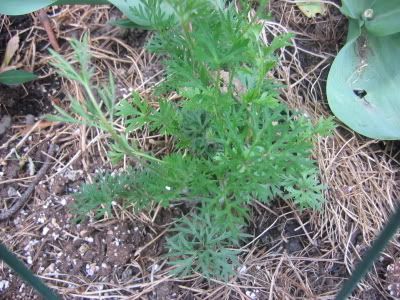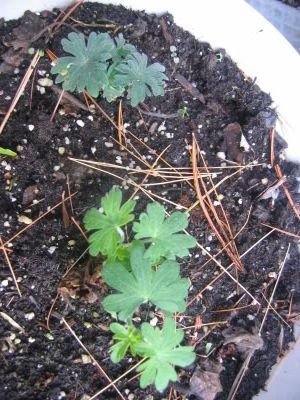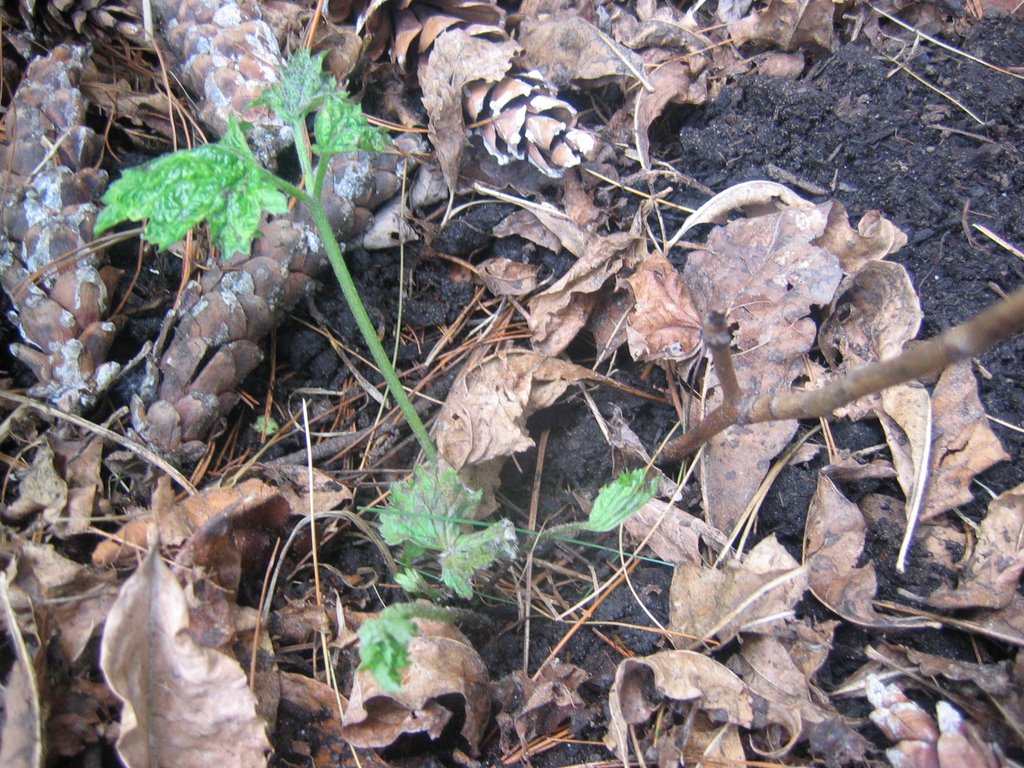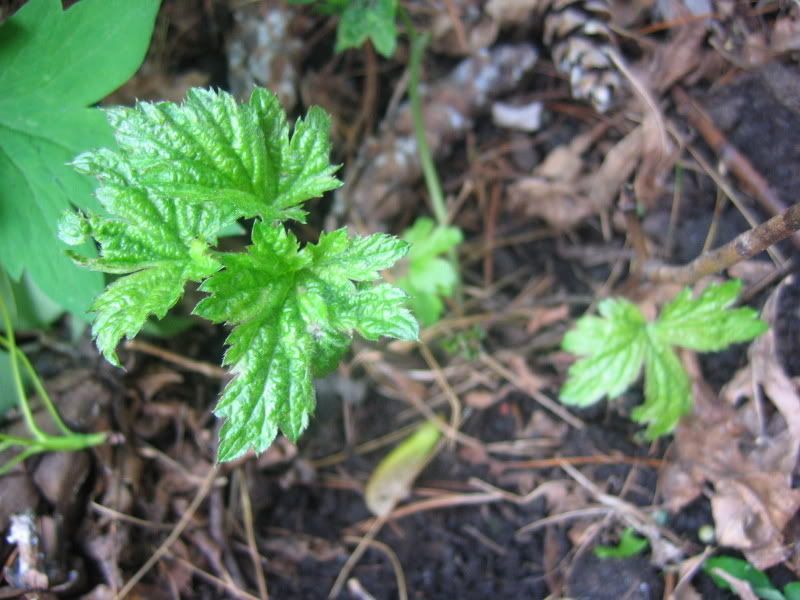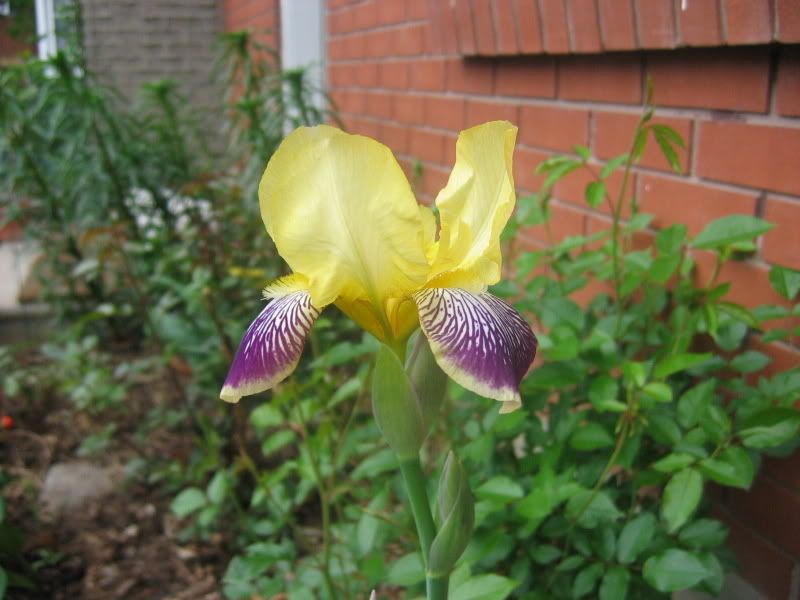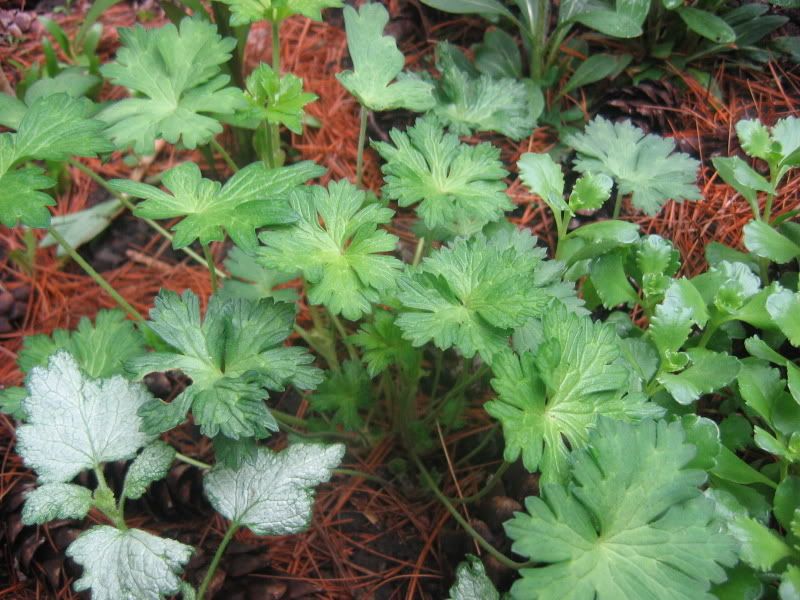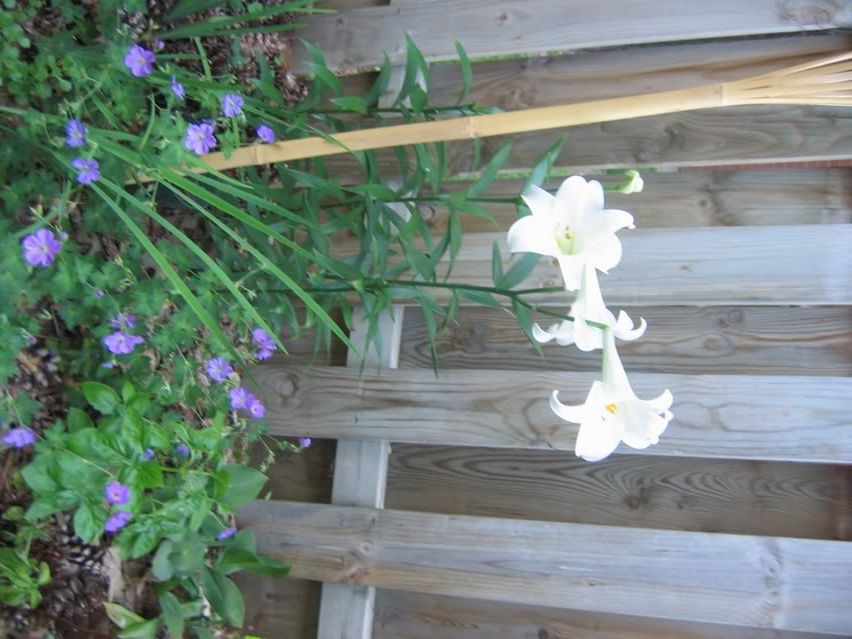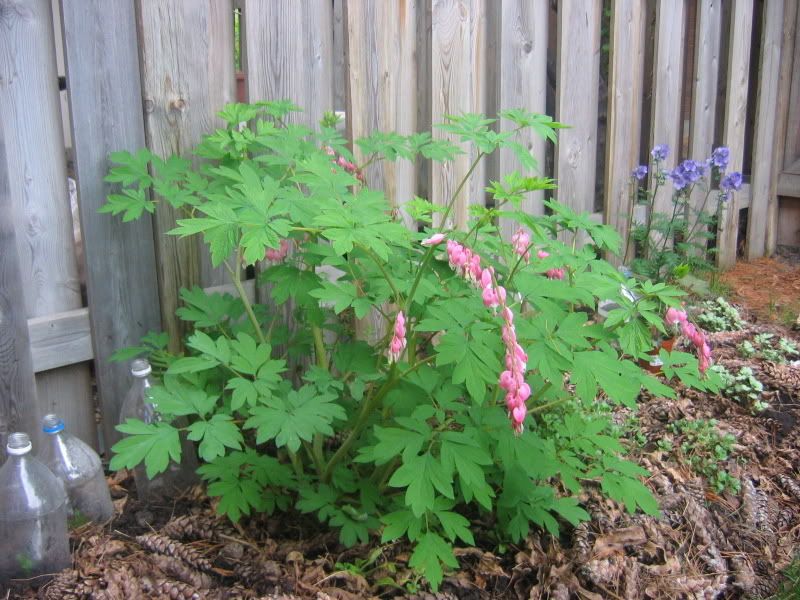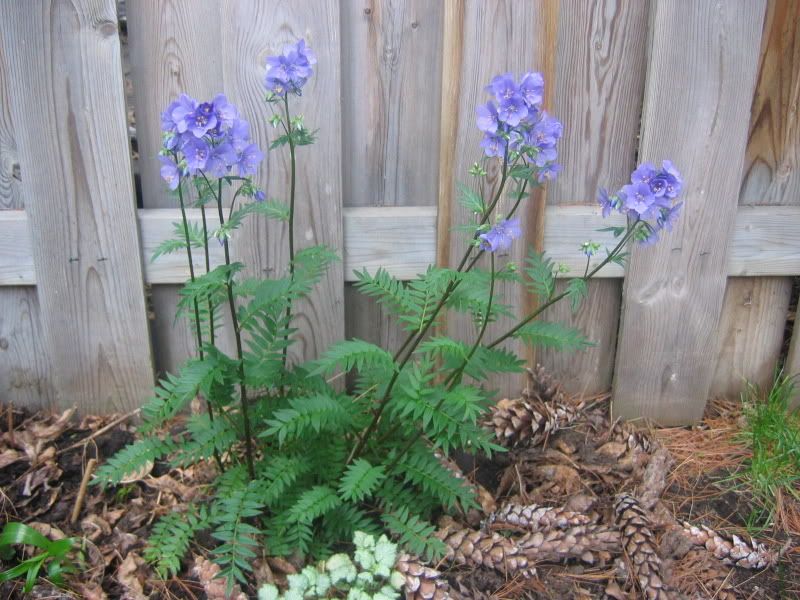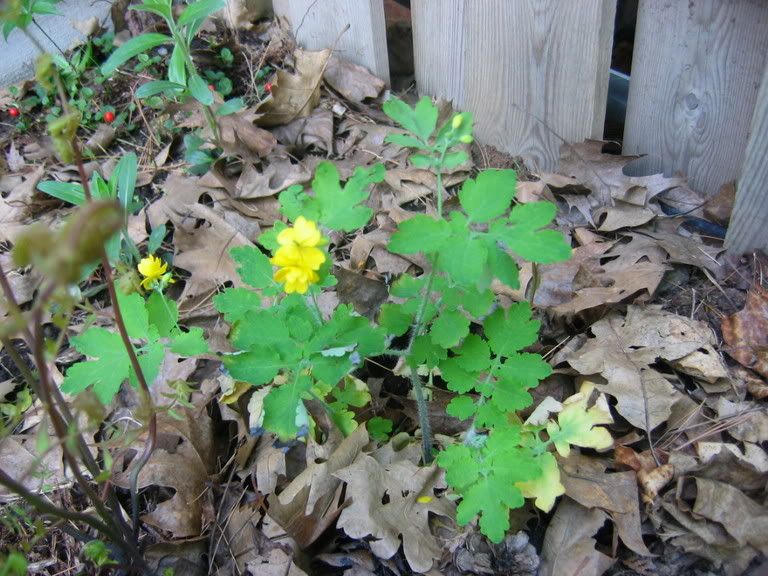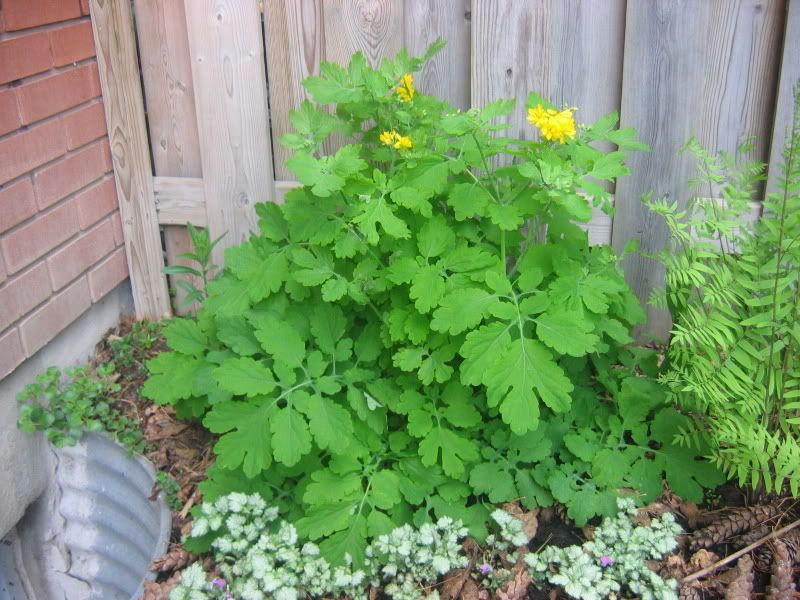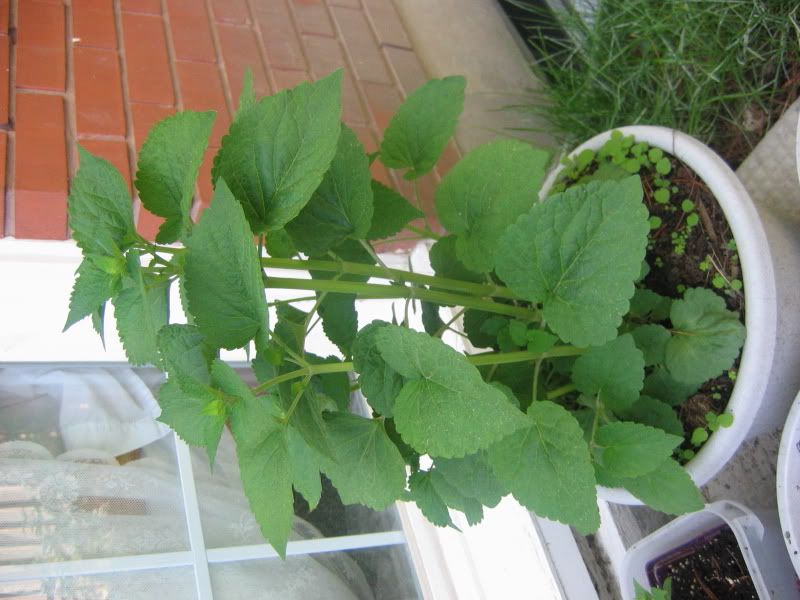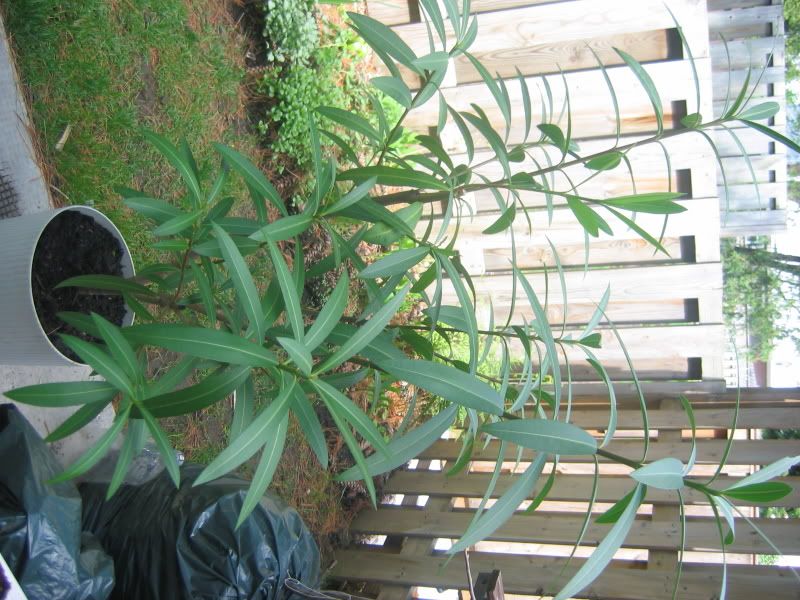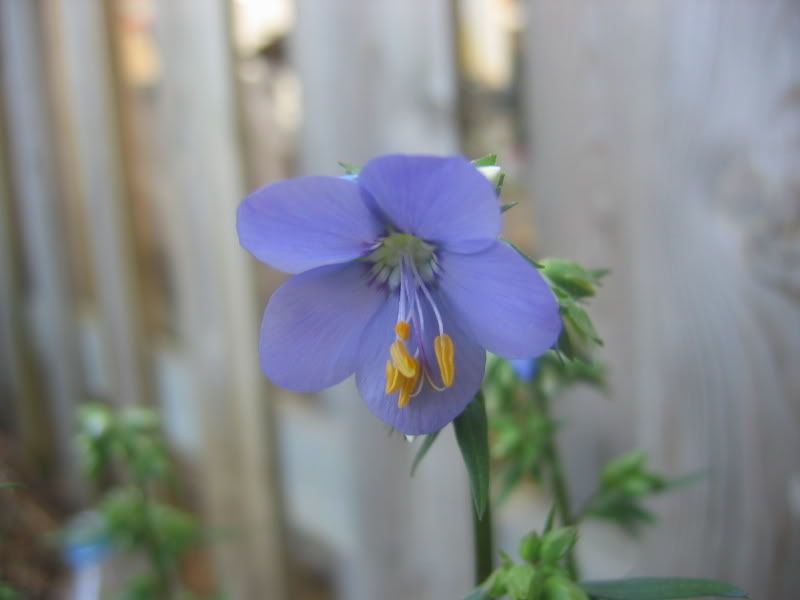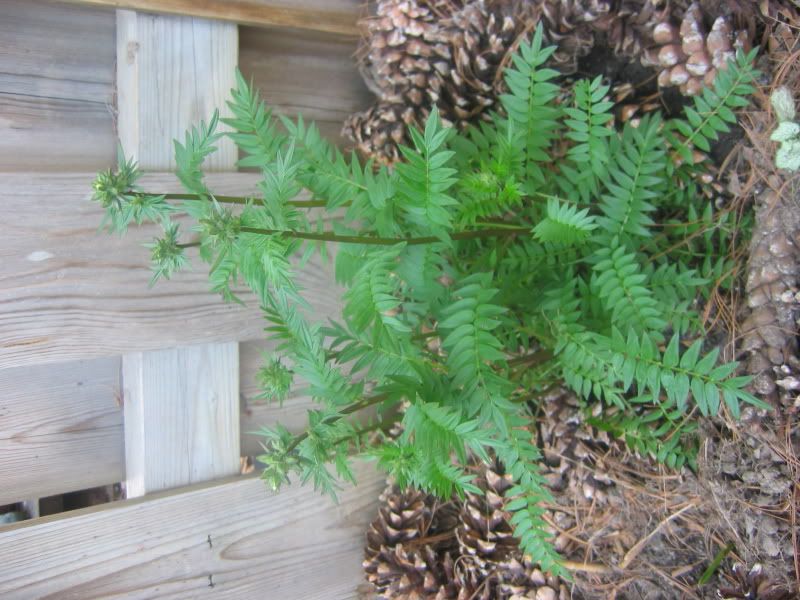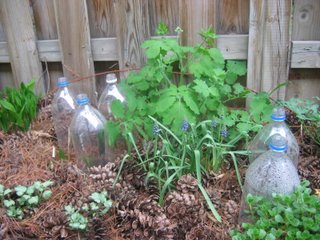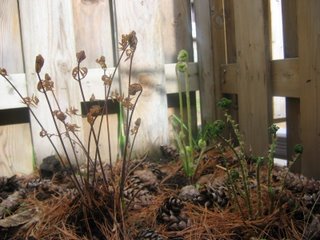Loyal subject of the royal fern
 The royal fern, also called the flowering fern, was new to me last year but I suspect we are beginning a long and happy relationship. No doubt you will find one growing in every shade garden I have the pleasure to put together in the future. It has such a lovely presence in the garden, even when it's being crowded by an enthusiastic neighbour. Just like Liz, she puts up with the local yokels with quiet dignity. I am going to move that neighbour over to the left to give her majesty a bit more room to spread though.
The royal fern, also called the flowering fern, was new to me last year but I suspect we are beginning a long and happy relationship. No doubt you will find one growing in every shade garden I have the pleasure to put together in the future. It has such a lovely presence in the garden, even when it's being crowded by an enthusiastic neighbour. Just like Liz, she puts up with the local yokels with quiet dignity. I am going to move that neighbour over to the left to give her majesty a bit more room to spread though.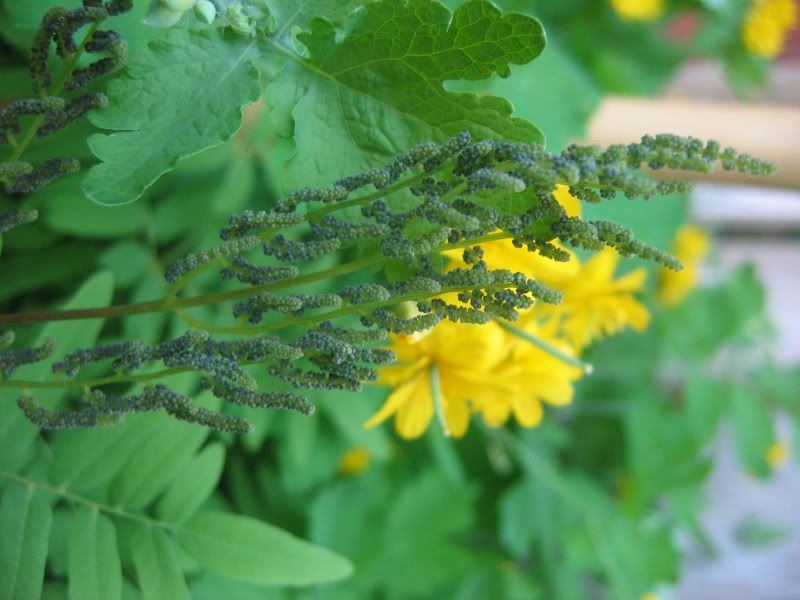 The name "flowering fern" comes by virtue of the fact that the fertile fronds are not entirely separate, as they are in cinnamon ferns or ostrich ferns. Rather the tips of a few select fronds develop into fertile segments, making it appear almost as if the fern were flowering. Another one of the Osmundas, claytoniana, develops its fertile segment right in the middle of the frond. Hey, every good family has a nutbar or two...
The name "flowering fern" comes by virtue of the fact that the fertile fronds are not entirely separate, as they are in cinnamon ferns or ostrich ferns. Rather the tips of a few select fronds develop into fertile segments, making it appear almost as if the fern were flowering. Another one of the Osmundas, claytoniana, develops its fertile segment right in the middle of the frond. Hey, every good family has a nutbar or two...
Neither one of my royal ferns developed the "flowers" last year, likely because they had been moved. I'm not sure the one I transferred into a pot a little while back will produce them this season either. This is not a fern that likes to be dug up too often. On the other hand, it will tolerate more sun than most other ferns.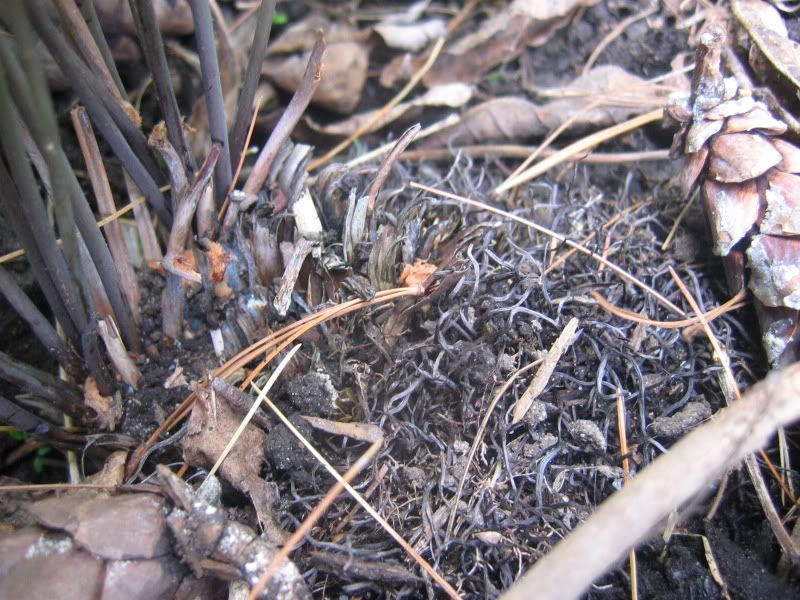 All of the Osmundas form a large fibrous mass at their base, known as the osmunda. (Wonder where they got the idea for that name?) Don't even begin to think about dividing it! Unless maybe you use a chain saw. Florists apparently use it for growing certain orchids when they want a soil-less base.
All of the Osmundas form a large fibrous mass at their base, known as the osmunda. (Wonder where they got the idea for that name?) Don't even begin to think about dividing it! Unless maybe you use a chain saw. Florists apparently use it for growing certain orchids when they want a soil-less base.
